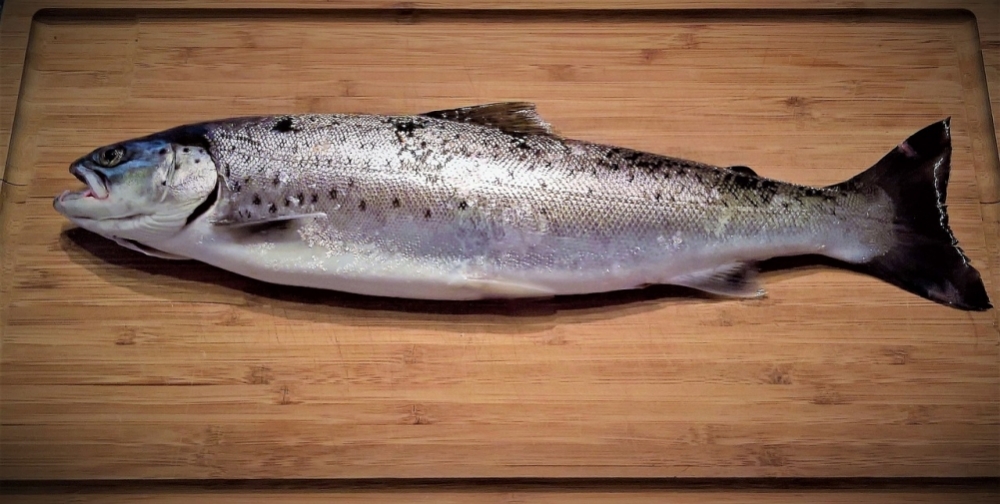

In partnership with private enterprise and government, scientists in São Paulo state (Brazil) plan to strengthen domestic production and consumption of aquatic products (photo: Monika Schröder/Pixabay)
In partnership with private enterprise and government, scientists in São Paulo state (Brazil) plan to strengthen domestic production and consumption of aquatic products.
In partnership with private enterprise and government, scientists in São Paulo state (Brazil) plan to strengthen domestic production and consumption of aquatic products.

In partnership with private enterprise and government, scientists in São Paulo state (Brazil) plan to strengthen domestic production and consumption of aquatic products (photo: Monika Schröder/Pixabay)
By Karina Toledo | Agência FAPESP – High nutritional value and low-fat content make fish a strategic food to combat malnutrition and obesity, both of which are major public health problems. In Brazil, however, production and consumption of fish, shellfish and other seafood are low – well below the country’s potential, according to experts.
Researchers at the University of São Paulo (USP), the São Paulo State Department of Agriculture, the University of Mogi das Cruzes (UMC) and the Fishery Institute – an arm of the state’s Agency for Agribusiness Technology (APTA) – aim to help change this situation in the years ahead by means of an applied research project to be conducted in partnership with Brazilian, American and European companies in the fishery industry, as well as governmental bodies.
The initiative is supported by FAPESP under the aegis of its program Science for Development Centers (CCDs).
Investment in the project is set to total about BRL 23.8 million, including infrastructure, salaries and matching funds. The researchers expect the results to translate into benefits for both health and the economy. Brazil is the world’s sixteenth-ranking producer of farmed fish and the third largest in the West, yet about a third of all aquatic food products consumed by Brazilians are imported.
“Brazil is an agricultural country and could become as large-scale a producer in fish as it already is in soybeans, corn, cotton, coffee, oranges, chicken and beef. It has the conditions to grow and meet external as well as domestic demand. The world will need twice as much food in 2050, and Brazil can become a leader in aquaculture,” said Daniel Lemos, a professor at the Oceanographic Institute (IO-USP) and principal investigator for the project.
To boost consumption of these products in Brazil, he added, it will be necessary to act on at least three fronts: lowering the cost of the products, facilitating access, and changing dietary habits by highlighting their nutritional advantages over red meat and especially fast food.
One of the first steps in this direction will consist of studying the consumption profile of the population of São Paulo state. After identifying the most consumed fish species, the researchers plan to analyze representative samples and detect the nutrients they contain. Based on this information, they will examine fish farming practices in order to find out how they affect the nutritional content of these species and test fortification strategies.
“We know cold-water species like salmon are generally richer in long-chain fatty acids [such as omega 3], but this trait can be manipulated during the farming process by adding certain natural compounds to feed, for example. We also plan to use genetic marker techniques to select for traits that make fish even more nutritious,” Lemos said.
As for lowering production cost, one of the strategies proposed is to encourage the use of substances currently dumped as waste or used in low-value products such as fish meal for animal feed.
“One of the most consumed aquatic products in Brazil, especially by upper-income households, is fillet of Tilapia. The fillet corresponds to about 30% of the fish. The rest is as nutritious as the fillet, and can be used to make fish balls, fish hamburgers and smoked fish, for example. This could lower the total cost of production,” Lemos said.
Knowledge dissemination
All the information produced during the project will be assembled on an open-access digital platform. The group has a communication unit, which will be responsible for producing newsletters and disseminating science-based information to social media and websites. The results of the project will also be displayed in an exhibition to be put on at Museu da Pesca, a museum run by the Fishery Institute in Santos, a major port city in São Paulo state.
“Brazilians eat relatively little fish, and we believe a rise in consumption could be associated with improvements in health,” Lemos said. “São Paulo state has research assets capable of contributing to a solution to this problem. FAPESP’s initiative represents an opportunity to strengthen efforts in the various efforts. Chicken used to be costly to produce but with investment it has become the protein most consumed in Brazil. This shows there’s ample domestic demand for high-quality meat provided it’s affordable.”
Alongside the research institutions, several companies are taking part in the project, including Polinutri and Neogen (Brazil), Biomar (Norway), Veramaris (Netherlands) and AquaHana (USA). The governmental bodies involved include the Ministry of Agriculture (MAPA), the Agricultural Research Foundation (FUNDAG) and APTA.
FAPESP’s Science for Development Program has three funding sources. FAPESP will contribute BRL 3.7 million. A matching amount in economic and financial terms (about BRL 5 million) will be invested by the partner companies. The academic institutions will contribute physical infrastructure and salaries for the researchers and technicians involved in the project.
Republish
The Agency FAPESP licenses news via Creative Commons (CC-BY-NC-ND) so that they can be republished free of charge and in a simple way by other digital or printed vehicles. Agência FAPESP must be credited as the source of the content being republished and the name of the reporter (if any) must be attributed. Using the HMTL button below allows compliance with these rules, detailed in Digital Republishing Policy FAPESP.





